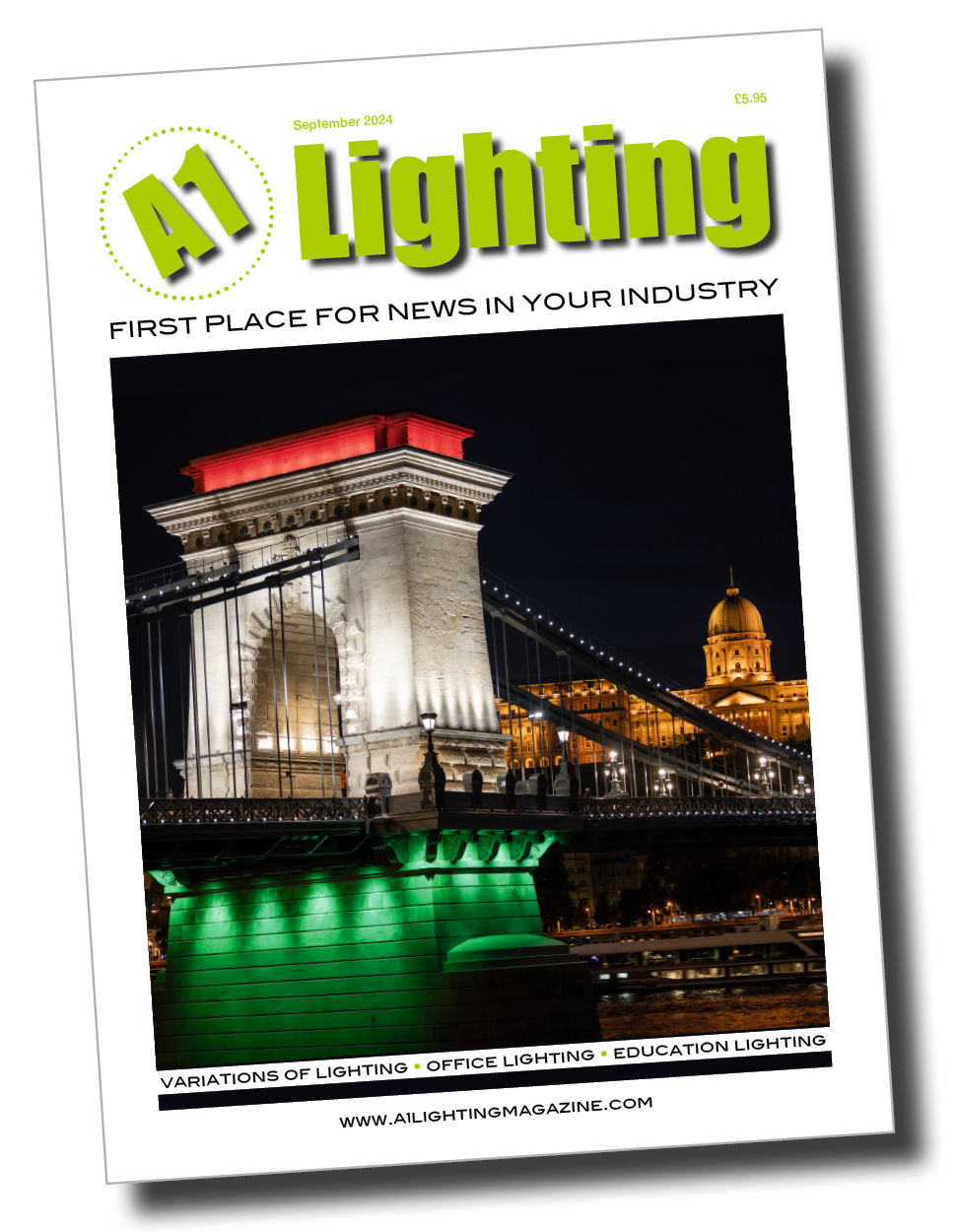
20th anniversary campaign kicks off with the release of four special podcast episodes: the Innovators
As lighting controls specialist Pharos Architectural Controls celebrates its 20th anniversary this year, the manufacturer has launched a podcast series to spotlight some of the people and projects that have helped to define the company and play a part in its success. In this first release, we focus on the Innovators.
Iain Ruxton from Spiers Major Light Architecture (SMLA), Maria Jenkins from Experience Lighting and Nic Tolkien from Architainment recorded podcast interviews with Pharos, discussing how the world of lighting has changed over the past two decades and the shifting sands that have shaped both their companies and their careers.
Ryan Sainsbury – UK and Northern Europe Regional Sales Manager for Pharos, led the series of conversations, which also included a sit-down chat with Sara Viele from Merlin Entertainment Group to discuss how Pharos products have enabled the transformation of the iconic London Eye from a static landmark to a living embodiment of celebrations, commemorations and of course, New Year’s Eve.
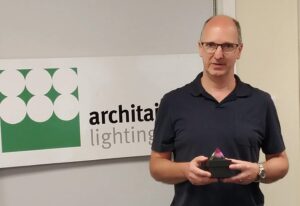
Nic Tolkien – Architainment
The fusion of architecture and entertainment has spurred a huge shift in the lighting industry and with Nic’s background in entertainment – having spent 20 years in the business before forming Architainment in 2003 – it makes sense that he would be one of the innovators in this blend of approaches and applications.
In his podcast episode, Nic explains how architectural lighting was significantly impacted by the creation of colour changing LED luminaires by Color Kinetics and others, and how this opened the floodgates for DMX-based systems that enable colour, transition and more entertainment-based scenes.
Nic explained how it felt to witness this technological shift first hand. “We’d go and see an architectural lighting designer and explain that these single fixtures – with the use of a controller – could change colour. Within a few minutes, we’d have 20 lighting designers from the practice around the table, pointing the fixture at the wall and imagining what they could do with this new gear.
“Now they had a product that could enable creativity and of course, the more creative they got, the more comprehensive the controllers needed to be.”
Nic commented that many lighting designers hailed from theatrical backgrounds and as the revolution of RGB LEDs began to take hold, he could sense an explosion of creativity as designers were empowered to create scenes that moved away from traditional white and really indulged in colourful light.
“The ability to change colour and add a theatrical element when it was available for these designers to specify caused a lot of interest and excitement, although perhaps not all clients were happy to herald in colour and do away with white, which is why the ability to amend scenes from white to colour became so pertinent.
“From Red Nose Day to the birth of a Royal baby, colour has revolutionised the way buildings are used and viewed over the past 12-18 years.”
And so, does Nic have a favourite building that uses these colour-changing technologies to best effect? “The London Eye is one that we were very excited to work on. In terms of a landmark and the statements it makes, it’s fantastic.”
The London Eye
Pharos Architectural Controls play a key role in the lighting capabilities of the London Eye, which is known for its iconic and timely attention-grabbing scenes.
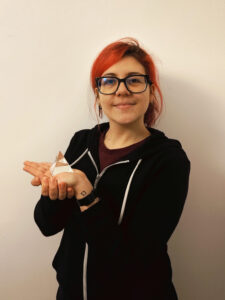
Sara Viele, AV Specialist for Merlin Entertainment Group, explained in her podcast episode, just how integral Pharos kit is: “Several Designer LPCs (Lighting Playback Controllers) are mounted onto the rim of the wheel, with three others across the building. We also use a Designer TPC (Touch Panel Controller) and have recently implemented Pharos Cloud for our marketing and PR, which is an easy interface for use in live activations. It’s a big distributed system but when you plug into the network, you see all of the controllers appear on Pharos Designer.
The interconnectivity of Pharos systems on the London Eye enables a multitude of nuanced uses that has provided Merlin with the opportunity to utilise the Eye as a marketing tool. Sara said: “The colour matching of the system is reliable and means that we can design creative lighting schemes and pre-programme the system to complement a huge range of events – like New Years Eve, film premiers, England football matches and Eurovision.
“The flexibility of the system is great and allows me to create my own lights that may not even be on the system yet, which means the possibilities are endless, and that is always exciting.”
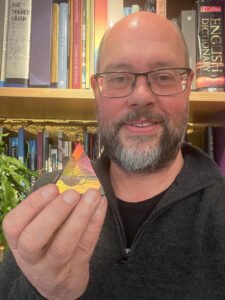
Iain Ruxton – SMLA
Recalling his first contact with Pharos, Iain Ruxton also noted the ‘world of white’ of lighting that he was experiencing as an architectural lighting designer in the early 2000s. “I remember being introduced to the controls at the Business Design Centre and knowing immediately that this kit would solve problems for me. We were doing more colour-change work that we needed to be more kinetic and so required DMX systems, but many of them were very limited in function, or were full-on entertainment systems that required a live operator.
“Fit-and-forget systems were few and far between and as well as being limited, they were clunky. Pharos brought to market a show-based DMX system that could do a whole lot more and was easy to interface with architectural systems. I’ve been using Pharos ever since, specifying hardware that’s scalable, to keep up with client demands.
“The LED revolution changed the game in this industry and there has been a great deal of interest from clients in coloured light and kinetic light. One of the big things that has pushed the scale is undoubtedly the use of pixels. The channel counts and universe counts are through the roof now, which was completely unfathomable a few years ago.”
Iain provided an example in the form of an art installation at Broadgate, near Liverpool Street Station in London: “The installation itself is a 5m circle with a fairly coarse pixel pitch behind a diffused Barrisol fabric. The content is generated by a PC with custom software by an artist. I used a Pharos Designer VLC to take their output as video signal, lay it onto the grid and pump out the artwork to the pixels. The Pharos kit does the show control, turning on and off, and giving options for local override and to change to fixed colours when required, for example to support a charity or celebrate a particular event.
“It is fantastic and all works really well together, but even that relatively small grid is made up of 42 universes. Projects like this have pushed on the needs from the controllers and Pharos has always come up to meet – and exceed – these requirements.”
Continuing the theme of scalability, Iain goes on to discuss a live project that is currently utilising Pharos Controls: “This is a real one off – not only because we are the lead designer on what is a massive lighting-only project rather than working with an architect or other designer – but also because of its cultural and historical significance.
“At-Turaif is a UNESCO World Heritage Site, considered to be the birthplace of the modern state of Saudi Arabia on the outskirts of Riyadh. Technically, it’s interesting on a number of levels. Due to the sheer size of the site, the system has been designed with multiple Designer LPC-X controllers – we didn’t know how good the local network was going to be or what order lights were going to be installed and commissioned in. Building in that resilience has definitely saved us during an incremental installation and switch-on. We currently have 35,000 channels patched and none of that is pixel. We are talking about individual lights, so it’s a huge scheme.
“Getting the lights patched correctly and working out the dynamic effects has been very challenging and required precise organisation and liaison with the luminaire supplier and installers. I can’t think of another system we could have used to get to where we needed to be in a manageable time frame.”
Iain also noted another key part of the project that presented both the SMLA and Pharos Support teams with a need to learn some new skills:
“Another objective was to script the lighting in line with lunar phases. This is where Pharos really comes into its own. I’ve done a lot of scripting with Pharos previously, but this project required both Ryan Sainsbury and I to learn a bit about astronomy to figure out how to work out whether a given night was the nearest period of darkness to the moment of full-moon. It’s more complicated than it sounds and was a steep learning curve for both of us!
“It was a great example – not only of how of how we can write bespoke coding, which can be exactly tailored to the needs of the project – but also of the collaborative approach and level of support that we as customers receive from Pharos. We can literally access Pharos support at any time of day, from anywhere in the world and that is priceless, when you’re working on site and under pressure. The show-must-go-on mentality really is a gamechanger and sets the Pharos team apart.”
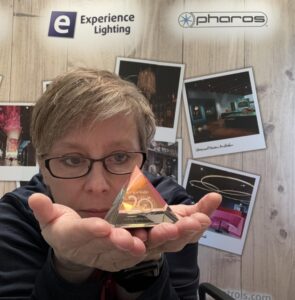
Maria Jenkins – Experience Lighting
Maria’s career in lighting began at university, where she used lighting design in entertainment as a creative outlet while she studied maths and statistics. Following a stint with an installation company, she joined Light Factor in London, where she met Nick Archdale and Chris Hunt of Flying Pig, who went on to establish Pharos. “Our paths crossed several times and after I set up as a freelance consultant, clients needed a control solution that moved with the times, so I was in regular contact with Pharos.”
Maria’s technical expertise, not only with programming, but also with distributing Pharos products has opened many doors for Pharos gear to be integrated into projects – particularly those with an entertainment background.
“The first project where I used Pharos was at Madame Tussauds on Baker Street in London and their kit really fitted the requirements of the project; an attraction that had to run in a specific way, having a complex set of outputs that needed to be achieved. It was prime for a DMX-driven system and with a tight turnaround prior to opening, Pharos was able to step up and meet the brief.
“Pharos has come out of the entertainment industry and the guys have that show-must-go-on mentality, but crucially, they also have a foot in the architectural camp, with the flexibility to integrate with more straightforward DALI-controlled systems; AV smart home and building management systems, as well as the more complex entertainment/colour change requirements. As a programmer and a distributor, this has constantly helped to make my life easier.”
Maria is one of the main distributors for Pharos in the UK, as well as being an experienced programmer. “Many of my clients are in the themed entertainment and attractions space and want to use Pharos for the same reasons I do. It’s quite easy to relay that enthusiasm for the kit. I am still on site, programming, which helps to keep my knowledge fresh and helps customers to see that I trust the product that I am selling to them.”
Maria went on to explain how she integrated Pharos into a recent project at the Printworks in Manchester. “The project started five years ago and the original specification was much more simple and looked very different to how it does now; an immersive colour-change system, integrated with content, over 90 clips that integrate with the lighting. The Designer LPC 4 also runs the facade individually, which is controlled by Pharos Cloud, allowing the client to amend the frontage as needed.”
Ryan Sainsbury from Pharos said: “We always rely on professionals like those spotlighted in this article to feed into our control systems and keep us connected with market requirements. Pharos has continued to grow and innovate in collaboration with companies like Architainment, Experience Lighting and Spiers Major Light Architecture.
“Highlighting some of the people and projects that we admire has been a real privilege and I’m excited for the next instalment of this campaign to celebrate 20 years of Pharos in 2024.”











